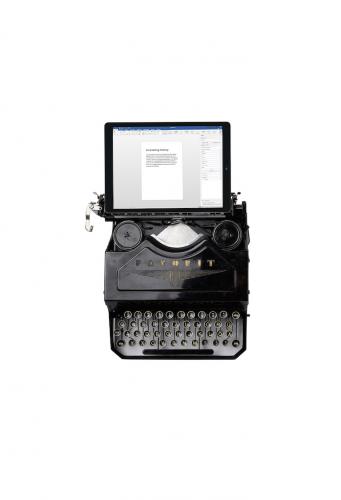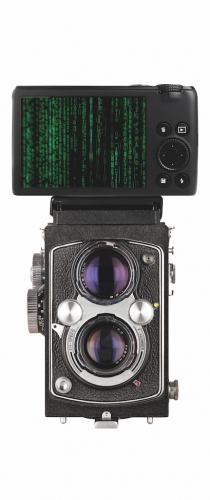Spotlight on innovative projects
Research success stories
The transformative impact of the digital turn on history and historiography was further accelerated by the pandemic and the lockdown in 2020. During this time the C²DH confirmed its pioneering role in the field of digital history.
The C²DH’s research activities are based around four thematic areas: contemporary history of Luxembourg, contemporary history of Europe, public history, and digital history and historiography. The Centre’s research projects systematically incorporate digital methods and tools. In this respect, several research fields are relevant for the Centre’s work, including data collection, storage, interpretation and analysis, algorithms and programming, modelling and visualisation, simulation and interaction, artificial intelligence, and architectures and networks.
All of these fields are closely interlinked and are addressed via an interdisciplinary approach. Multidisciplinary research teams bring extensive expertise in many of these areas to each of the C²DH’s research projects. The researchers invited by the C²DH to contribute to projects draw on their impeccable academic credentials at the world’s leading universities. The teams also include young scientists, who often come up with unconventional, innovative ideas. People from around twenty different nationalities come together to address the challenges under investigation at the Centre.
One of those challenges is web archiving. Since the mid-1990s, the World Wide Web (or simply the Web) has become an inherent part of our societies’ communicative infrastructure.
The challenge now facing us is how to conserve data and digital heritage.
Over and above the task of collecting data at European level, we need to think about the organisation, inclusion, interpretation, analysis and interoperability of these data. This is the mission taken up by the WARCnet project, co-led by Valérie Schafer, Professor in Contemporary European History, in partnership with Aarhus University and the University of London.
Another innovative interdisciplinary project rooted in contemporary history was the replication of a Kinora, an early 20th-century motion picture device designed for home use. The project, led by media historian Tim van der Heijden, used 3D modelling and desktop manufacturing engineering techniques to shed light on the workings and use of this early motion picture technology, which was developed to watch animated scenes without the need for a projector.
National and transnational history is also a cornerstone of research at the C²DH – again with an added digital dimension. Two digital exhibitions were developed and launched in 2020: “Exploring an in-between space. East Belgium 1920-2020”, led by Christoph Brüll, and “175 years of POST Luxembourg”, led by young researcher Aurélia Lafontaine. These websites address a broad spectrum of users with varying levels of interest and expertise.
A further project, REMIX, uses digital public history methods to study the industrial past of the Minette region in southern Luxembourg. As part of this project, a Temporary History Lab was set up in Esch-sur-Alzette, capital of the Minette region, in autumn 2020, with opportunities for the public to take part in a range of participatory history activities. Denis Scuto, Vice-Director of the C²DH and Head of the “Contemporary History of Luxembourg” Research Area, has also recently focused his energy on southern Luxembourg, publishing a series of documentary films and the Guide historique et architectural Esch-sur-Alzette, with the support of capybarabooks and the Esch-sur-Alzette town council.
Doing Experimental Media Archaeology
One of the C²DH research success stories in 2020 was the replication of a Kinora, an early 20th-century motion picture device designed for home use. The Kinora first emerged at the end of the 19th century and developed into one of the most popular “home movie” machines of the early 1900s.
Analysing transnational events
WARCnet, a European network dedicated to web archives Following on from the pioneering efforts of the Internet Archive in preserving web content from 1996 onwards (see the Wayback Machine, with 486 billion archived web pages as of late 2020), the
Prospecting an in-between
East Belgium 1920-2020 is a virtual exhibition about the history of the Eupen-Malmedy-Sankt Vith region since it went from being German to Belgian in 1920.
Exploring the history of Esch
On 9 October 2020, the C²DH, capybarabooks and the Esch-sur-Alzette town council presented the Guide historique et architectural Esch-sur-Alzette at the Infofabrik in Esch. In this 480-page guide, Georges Buchler, Jean Goedert, Antoinette Lorang, Antoinette Reuter and Denis Scuto look back at the d
Become part of history!
The Temporary History Lab, housed in the Annexe22 pavilion on Place de la Résistance in Esch from 26 September to 23 October, was the first milestone in the research project “Remixing Industrial Pasts in the Digital Age” (REMIX). The project, funded by Esch2022 a.s.b.l., was one of the initiatives organised as part of Esch2022 European Capital of Culture.
Digital exhibition
Can you imagine a day without your mobile phone, without watching TV or browsing the latest news online (or alternatively reading it in a newspaper that was delivered to your house at the crack of dawn)? For most people, the answer would probably be no.




